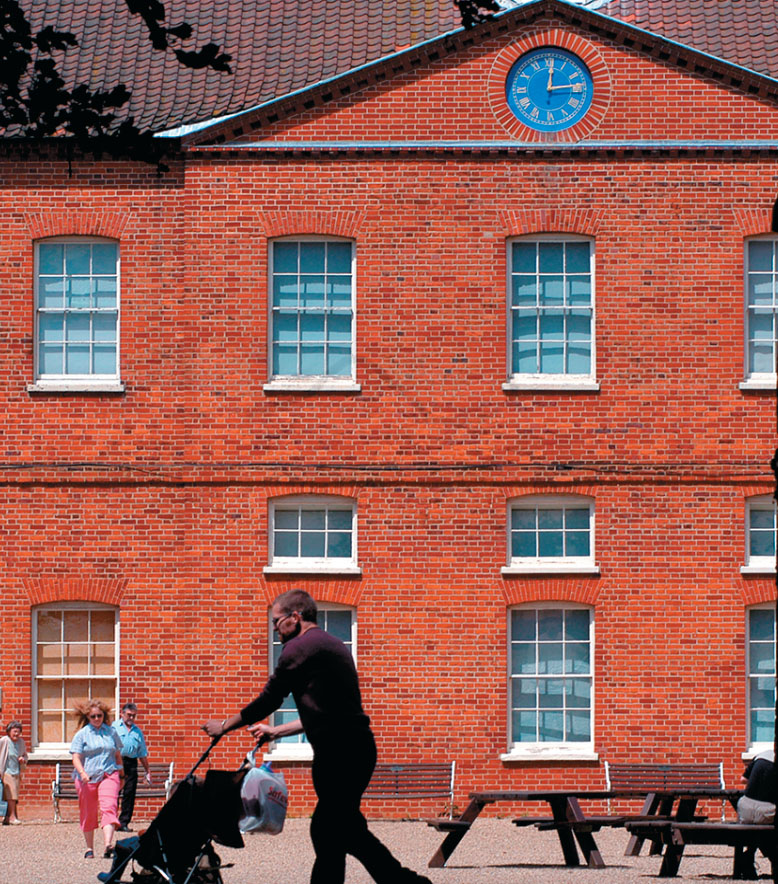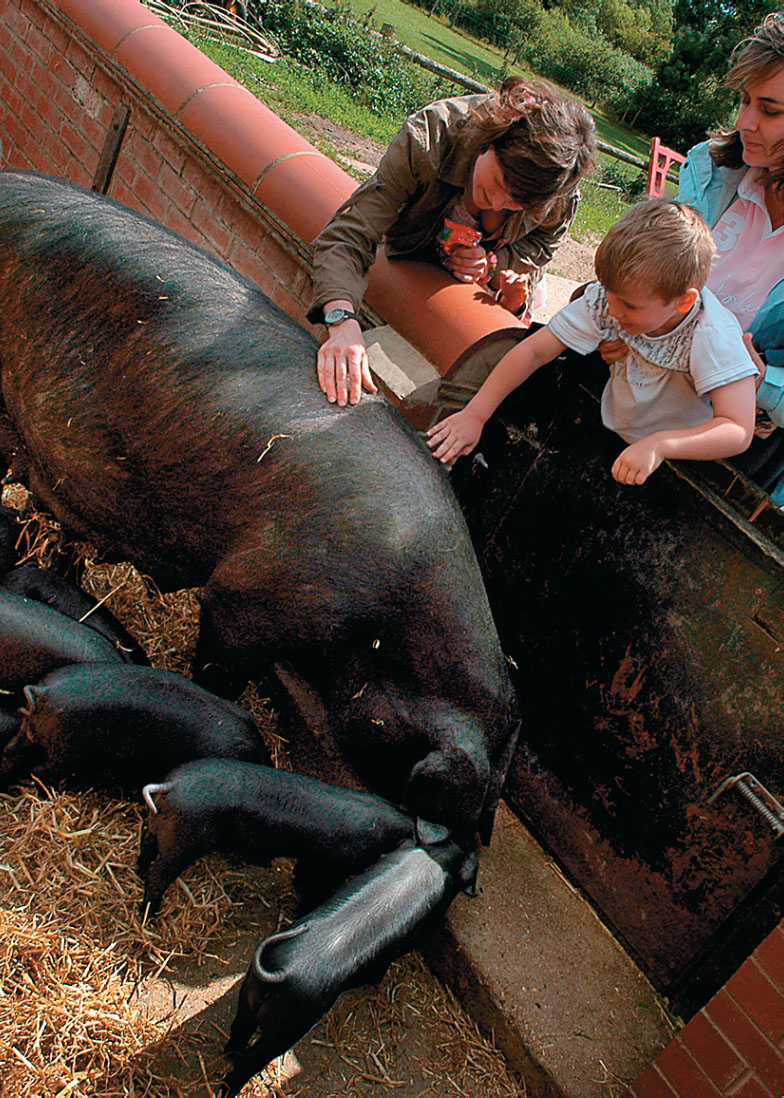
A Visit to Gressenhall Farm and Workhouse
[caption id="PicnicsPigletsandPaupers_Feature" align="aligncenter" width="778"]

©BRIAN HARRIS ALAMY
UNTIL THE EARLY 19TH CENTURY, the way of life across rural England had been largely unchanged in 400 years. For almost everyone, a hard, poor life was based on back-breaking agriculture, or domestic service in the employ of those with land-based wealth. Then the industrial revolution brought increasing mechanization to agriculture. Seed drills and mowers meant fewer laborers were needed for fewer jobs. Many of the working poor drifted to the burgeoning new mill cities eager for cheap workers, and some of them ended up at the workhouse.
In rural life museums across the country, visitors can peel back the decades of technological and social progress to see the way country folks lived in bygone days. One of the most interesting of these is Gressenhall Farm and Workhouse, the Museum of Norfolk Life near Dereham. At Gressenhall, an enduring aspect of England’s rural past that comes to life in particular is the Union Workhouse.
In 1834 the Poor Law was amended, taking the responsibility for directly caring for the poor away from the parishes for the first time since the days of Elizabeth I. The bill created a Poor Law Commission to form parishes into unions for poor relief. Groups of 50 parishes were banded together to fund and govern workhouses. Throughout the country a network of such houses were quickly built as refuges for those who, for one reason or another, could not take care of themselves in the world. The indigent old and infirm, orphans, destitute families and the mentally, emotionally or physically incapacitated became inmates of the workhouse.
Gressenhall was the workhouse for the Mitford and Launditch Union. Its massive redbrick buildings had actually been built as a “house of industry” for those parishes in 1777. The entire complex stands today, telling this story of life among the rural poor, as the centerpiece of Norfolk’s museum of country life. Some 600 inmates (yes, inmates) at a time lived here. When the workhouse system was finally abandoned in 1948, it housed “delinquent families” and served as an old folks home until 1975. It was turned over to the Norfolk County Council and became the county’s rural life museum the next year. Most workhouses were converted to other uses or allowed to become derelict.
Today, Gressenhall’s workhouse is the centerpiece of a dynamic 50-acre open-air museum, showcasing not only life in the union workhouses, but also a host of displays and experiences that re-create rural life in Norfolk. The working farm at Gressenhall offers a colorfully accurate depiction of “old-fashioned” agrarian life throughout the seasons: hens running around the farmyard, hefty sows nursing their piglets, huge working Suffolk Punch horses (that stand 18 hands and weigh just over a ton) and the kitchen smells wafting from the farm manager’s cottage. In Gressenhall’s active workhouse days, the dairy and large gardens of the farm supplied the workhouse, and able-bodied inmates supplied the farm labor.
Not being able to take care of yourself in the outside world was frowned upon. The folks in the parishes who paid the bills hardly wanted to encourage people to rely upon the benevolence of the public. In diet and physical living standards, almost everyone in the workhouse was better off than they would have been on the outside. To deter folks from taking advantage of the system, though, life at the Gressenhall Workhouse was deliberately harsh and even punitive. On entering the workhouse, inmates were classified and placed in one of seven appropriate wards that had no contact with each other. Husbands, wives and children were separated, and saw each other only for an hour on Sundays. Life was monotonous and highly regulated.
“Notice the clock on top of the building,” directed museum executive Stuart Gilles. The handsome 18th-century tower clock was not unlike many such timekeepers in churches, colleges and other institutions, but it served as a symbol of the inmates’ repression. “For most of the inmates, it would have been the first time their lives had been organized by a clock and the ringing of a bell.”
[caption id="PicnicsPigletsandPaupers_img1" align="aligncenter" width="784"]

©BRIAN HARRIS ALAMY
Able-bodied men were occupied picking oakum or breaking stones. Women worked in the massive laundry, kitchens or cleaning. There was a school where children learned to give deference and obedience to their “betters,” and a chapel in which all could gather to worship and thank God for their care.
In addition to the institutional care of regular inmates, every union house had a dormitory for “casuals”—a temporary homeless shelter. The casuals were folks who tramped around the countryside from workhouse to workhouse. “If you came in for less than 48 hours, you could have a bed and meals, without being incarcerated. You could keep a degree of freedom,” Gilles said. “The term ‘tramp’ particularly describes people who moved from workhouse to workhouse like this.”
To the west side of the walled workhouse complex is the old graveyard. Nameless hundreds were buried there in graves as unmarked as their lives had been. Now, a well-tended orchard of heirloom apples hides all traces of the ground’s past use. Beyond the orchard lies an adventure playground that would be the delight of anyone from 6-12. Gressenhall is, after all, a family-oriented visit.
“One-time visitors come with a particular interest in the workhouse,” Gilles avers. “The people who are regular visitors come back for our other attractions.” A full calendar of special events at Gressenhall are certainly among those attractions: the working farm, halls of permanent and changing exhibits, from old farm implements and vehicles, countryside walks, picnic and children’s areas and a top-notch café. Some visitors even come back to find out about their own past.
“There’s been a real democratization of history in recent years,” Gilles observed. “When the museum was opened, many people wanted to pull the workhouse down. There was a real reluctance to recognize its role in rural history. Now, we find that people are more likely to celebrate the fact that they’ve got a relative who was an inmate rather than be ashamed of it as they would have been only a generation ago.”
Gressenhall seems like an odd combination of themes—a family-oriented outdoor recreational destination and a museum of one of the bleaker elements of social history. Somehow, though, Norfolk’s rural life museum makes a great visit. Perhaps the idyllic scene of farm and orchard, visiting schoolchildren and adventure playground takes the edge off the grim realities of the workhouse. Still, it is good to be reminded that we enjoy these country scenes from a relatively easy life in the 21st century. In 1834, folks didn’t come to Gressenhall to picnic.
Gressenhall Farm and Workhouse, located on the B1146, three miles northwest of Dereham, is open throughout the year. For more information, check out its Web site at www.museums.norfolk.gov.uk.





Comments